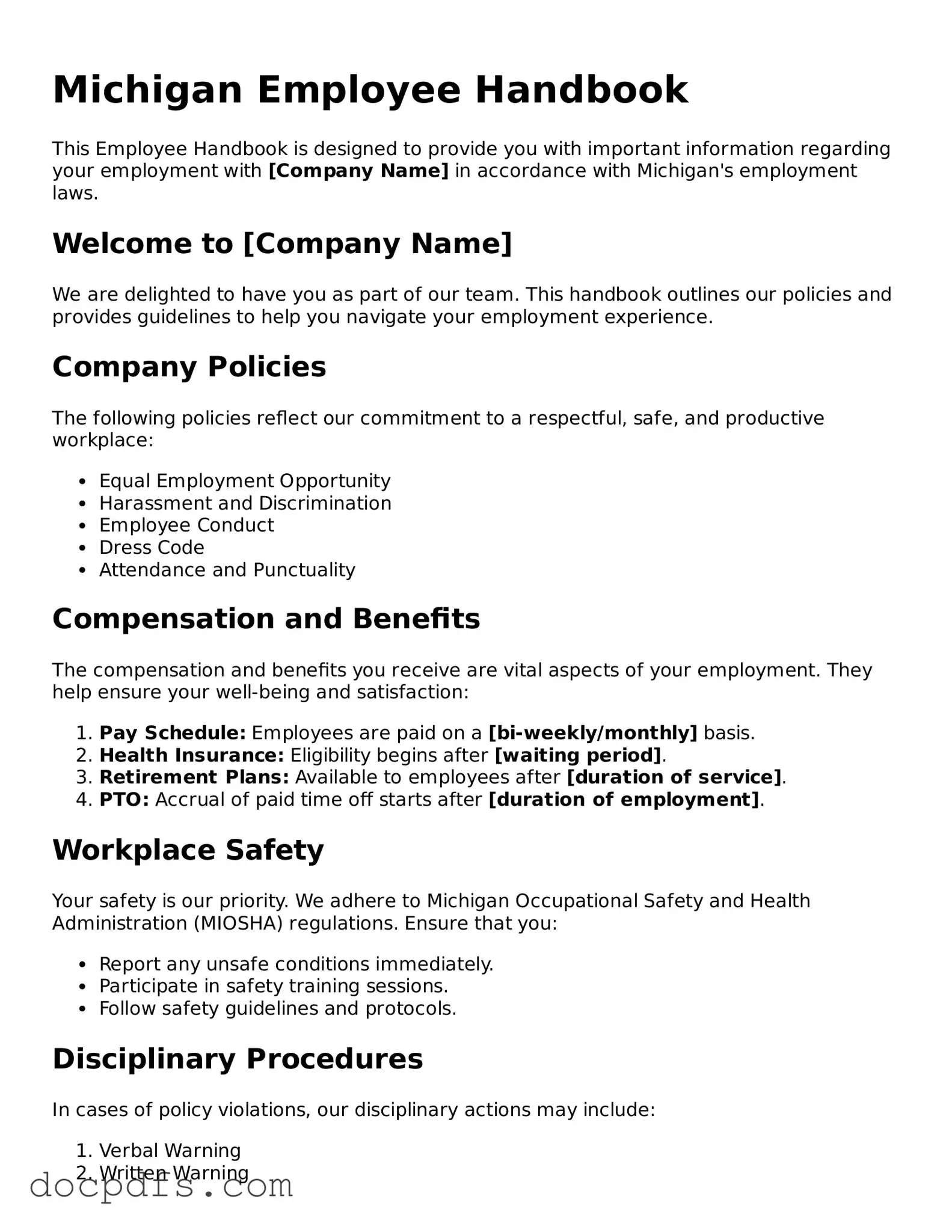The Michigan Employee Handbook form serves as a guide for employers and employees in the state of Michigan. It outlines the policies, procedures, and expectations of the workplace. This document helps ensure that both parties understand their rights and responsibilities, promoting a harmonious work environment.
All employers in Michigan, regardless of size, are encouraged to create an Employee Handbook. This includes businesses, non-profits, and government agencies. Employees benefit from having clear guidelines about workplace policies, which can help prevent misunderstandings and disputes.
What should be included in the Employee Handbook?
While the specifics may vary depending on the organization, a comprehensive Employee Handbook typically includes:
-
Company mission and values
-
Employment policies (e.g., hiring, termination)
-
Compensation and benefits information
-
Workplace conduct and expectations
-
Disciplinary procedures
-
Health and safety guidelines
-
Leave policies (e.g., vacation, sick leave)
Is the Employee Handbook legally required in Michigan?
While there is no specific law in Michigan mandating an Employee Handbook, having one is highly recommended. It can serve as a legal safeguard for employers, helping to clarify policies and reduce the risk of legal disputes. Furthermore, certain federal and state laws may require specific policies to be documented, such as those related to discrimination and harassment.
How often should the Employee Handbook be updated?
Regular updates to the Employee Handbook are essential. Employers should review the document at least annually or whenever there are significant changes in laws, company policies, or workplace procedures. Keeping the handbook current helps ensure compliance and maintains clear communication with employees.
How can employees access the Employee Handbook?
Employers should make the Employee Handbook easily accessible to all employees. This can be done through various methods, such as:
-
Providing a printed copy during onboarding
-
Posting it on the company intranet
-
Distributing it via email
Employees should be encouraged to read the handbook and ask questions if they need clarification on any policies.
